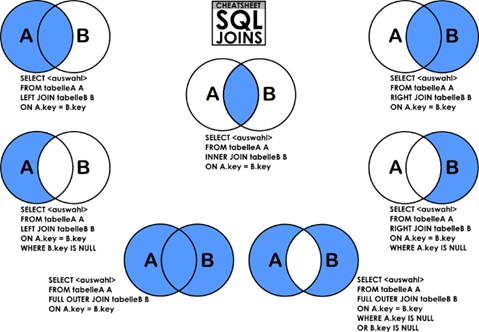5 SQL Queries Everyone Should Know
SQL queries are an important tool for retrieving data from databases and are widely used in the field of computer science. SQL stands for Structured Query Language, and many tools can be used to run SQL queries, such as PyCharm and Anaconda Spyder. Below are five essential SQL query concepts that everyone should know. 1. WHERE Usage: retrieve specific types of data from a table based on filters. SELECT emp_name FROM company WHERE department = 'Finance'; Note: Filters are always important, as without them, the data can be overwhelming and may include a lot of unnecessary information. 2. GROUP BY Usage: It is widely used for summarizing data and can be combined with aggregate functions. SELECT department, count(*) AS emp_count FROM employees_table GROUP BY department; Note: Aggregation is useful for identifying patterns and uncovering hidden trends in the data. 3. JOINS Usage: Joins are used to combine rows from different tables based on a key column, and data is retrieved according to specific conditions. There are different types of joins, with the most used being the inner join. SELECT orders.order_id, customers.customer_name FROM orders_table a INNER JOIN customers_table b ON a.customer_id = b.customer_id; Note: See the image below for more information on all types of joins, along with a Venn diagram that visually explains them. Diagram reference: https://dsin.wordpress.com/2013/03/16/sql-join-cheat-sheet/ 4. Window Functions: Usage: This is widely used when performing calculations across multiple rows in a table that are related to the current row. SELECT employee_id, salary, RANK() OVER (ORDER BY salary asc) AS salary_rank FROM employees_table; Note: Window functions are extremely useful for building advanced reports that require complex analytics, such as ranking, row numbering, and moving averages. 5. Subqueries: Usage: Subqueries are widely used to incorporate the result of one query within another query. SELECT first_name, last_name FROM employees_table WHERE salary > ( SELECT AVG(salary) FROM employees_table); Note: Subqueries are useful for creating advanced and dynamic logic that normal queries can’t achieve, and they can sometimes help optimize query performance. Well, this was fun to write! If you found this helpful, please clap, share, or follow for more data tips. Let me know in the comments what you think, and if anyone has questions or would like me to cover more advanced queries. Happy querying!

SQL queries are an important tool for retrieving data from databases and are widely used in the field of computer science. SQL stands for Structured Query Language, and many tools can be used to run SQL queries, such as PyCharm and Anaconda Spyder. Below are five essential SQL query concepts that everyone should know.
1. WHERE
Usage: retrieve specific types of data from a table based on filters.
SELECT emp_name
FROM company
WHERE department = 'Finance';
Note: Filters are always important, as without them, the data can be overwhelming and may include a lot of unnecessary information.
2. GROUP BY
Usage: It is widely used for summarizing data and can be combined with aggregate functions.
SELECT department, count(*) AS emp_count
FROM employees_table
GROUP BY department;
Note: Aggregation is useful for identifying patterns and uncovering hidden trends in the data.
3. JOINS
Usage: Joins are used to combine rows from different tables based on a key column, and data is retrieved according to specific conditions. There are different types of joins, with the most used being the inner join.
SELECT orders.order_id, customers.customer_name
FROM orders_table a
INNER JOIN customers_table b ON a.customer_id = b.customer_id;
Note: See the image below for more information on all types of joins, along with a Venn diagram that visually explains them.
Diagram reference: https://dsin.wordpress.com/2013/03/16/sql-join-cheat-sheet/
4. Window Functions:
Usage: This is widely used when performing calculations across multiple rows in a table that are related to the current row.
SELECT employee_id, salary,
RANK() OVER (ORDER BY salary asc) AS salary_rank
FROM employees_table;
Note: Window functions are extremely useful for building advanced reports that require complex analytics, such as ranking, row numbering, and moving averages.
5. Subqueries:
Usage: Subqueries are widely used to incorporate the result of one query within another query.
SELECT first_name, last_name
FROM employees_table
WHERE salary > (
SELECT AVG(salary)
FROM employees_table);
Note: Subqueries are useful for creating advanced and dynamic logic that normal queries can’t achieve, and they can sometimes help optimize query performance.
Well, this was fun to write! If you found this helpful, please clap, share, or follow for more data tips. Let me know in the comments what you think, and if anyone has questions or would like me to cover more advanced queries. Happy querying!













































































![Trump Tells Cook to Stop Building iPhones in India and Build in the U.S. Instead [Video]](https://www.iclarified.com/images/news/97329/97329/97329-640.jpg)








































































































































































































































![[The AI Show Episode 147]: OpenAI Abandons For-Profit Plan, AI College Cheating Epidemic, Apple Says AI Will Replace Search Engines & HubSpot’s AI-First Scorecard](https://www.marketingaiinstitute.com/hubfs/ep%20147%20cover.png)
























![How to Enable Remote Access on Windows 10 [Allow RDP]](https://bigdataanalyticsnews.com/wp-content/uploads/2025/05/remote-access-windows.jpg)








































































































































































































































